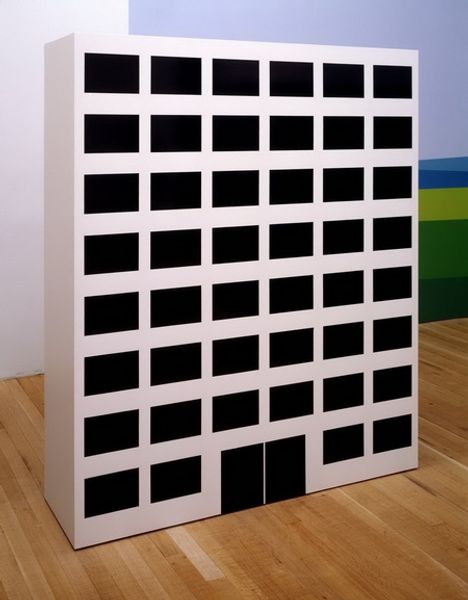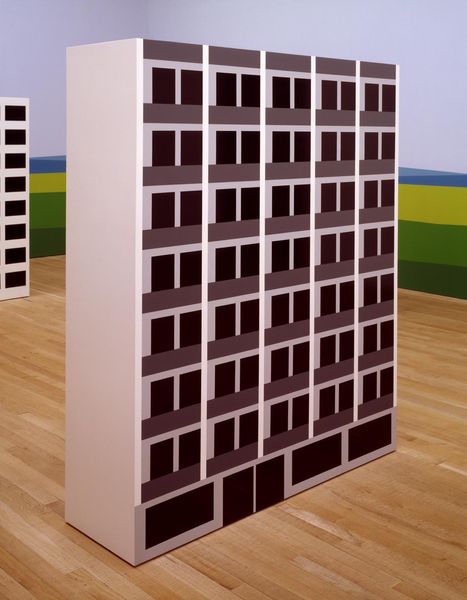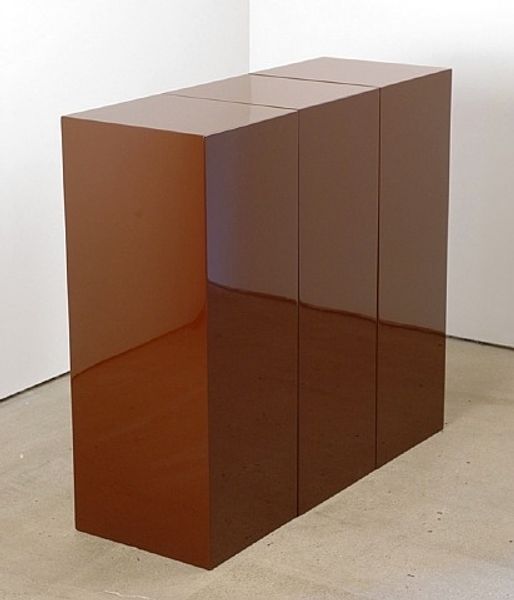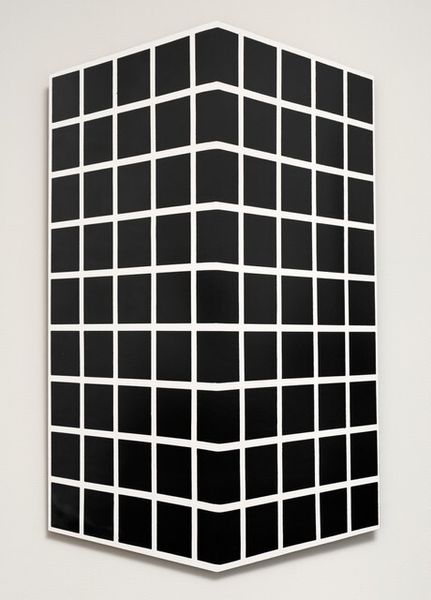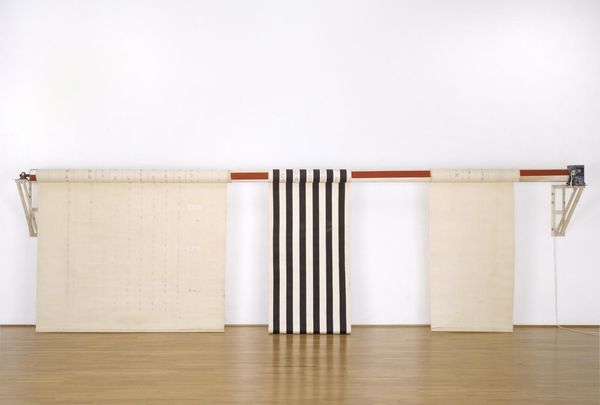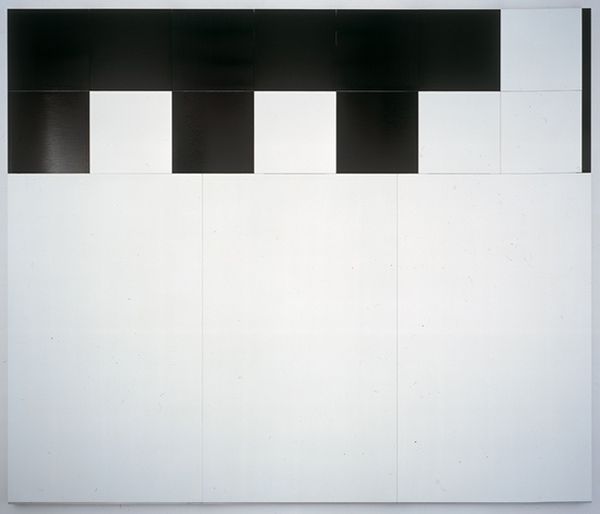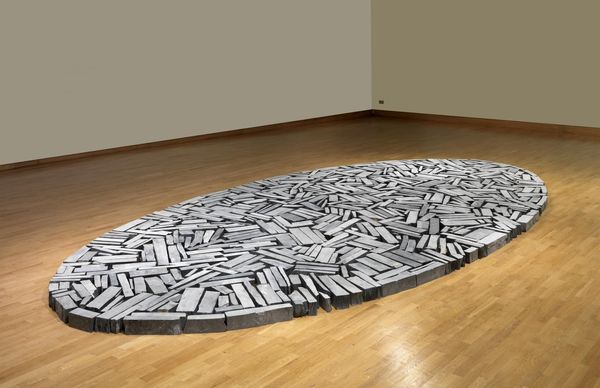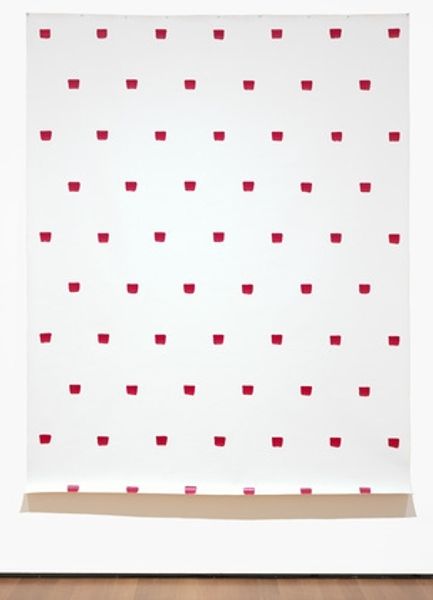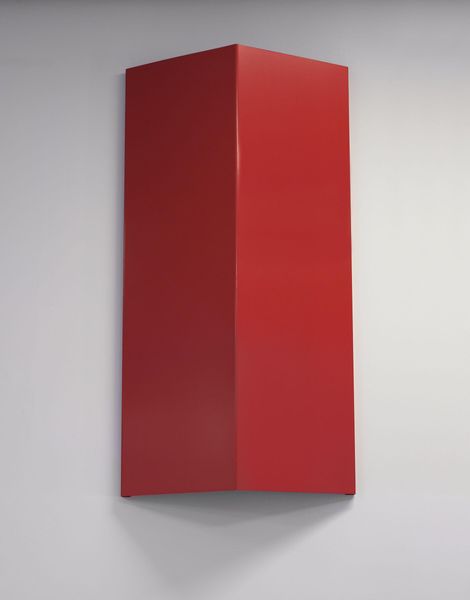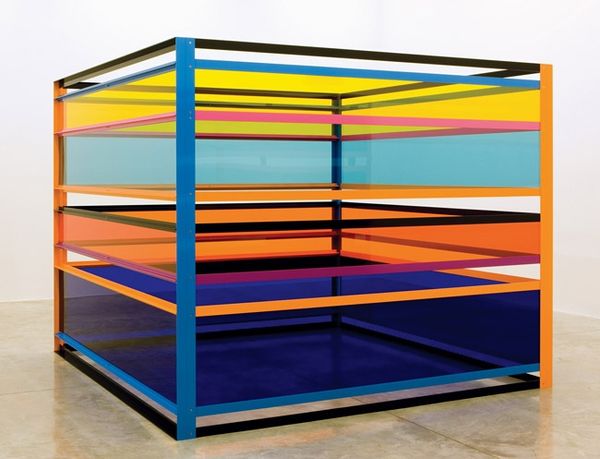
Dimensions: unconfirmed: 1845 x 1535 x 453 mm
Copyright: © Julian Opie | CC-BY-NC-ND 4.0 DEED, Photo: Tate
Editor: Julian Opie's "You see an office building. 5" is a stark, almost monolithic sculpture. Its grid-like facade seems to represent the anonymity and repetition of modern urban architecture. What social commentary might Opie be making here? Curator: I see Opie's piece as a commentary on late-stage capitalism and its impact on urban spaces. The repetitive nature of the grid can be interpreted as a critique of the dehumanizing effects of corporate architecture and the alienation it fosters within city environments. Editor: So, it’s not just about seeing a building, but seeing the power structures it represents? Curator: Precisely. Opie asks us to confront how these structures shape our lives and contribute to the social landscape. Reflecting on this connection makes me think about which urban environments reflect my personal and social values. Editor: I never thought of it that way before. This has totally changed my perspective. Curator: It’s amazing how art can reveal hidden layers of meaning and spark these connections.
Comments
tate 7 months ago
⋮
http://www.tate.org.uk/art/artworks/opie-you-see-an-office-building-5-t07211
Join the conversation
Join millions of artists and users on Artera today and experience the ultimate creative platform.
tate 7 months ago
⋮
You see an office building. 5 and its companions, numbers 2 (Tate T07208), 3 (Tate T07209) and 4 (Tate T07210), are four rectangular floor-standing units of the same size. Opie created nine in this series in 1996. They are hollow, rectangular boxes constructed from MDF board, raised slightly off the floor with four narrow feet on the base of each. The boxes were roller-painted with white paint in the manner of a wall. Simplified architectural details in regular geometric patterns of squares, rectangles and stripes were then added in black and two tones of grey using a paint roller and masking tape system. The tops of the units are painted with a thin layer of white. Opie has explained:
